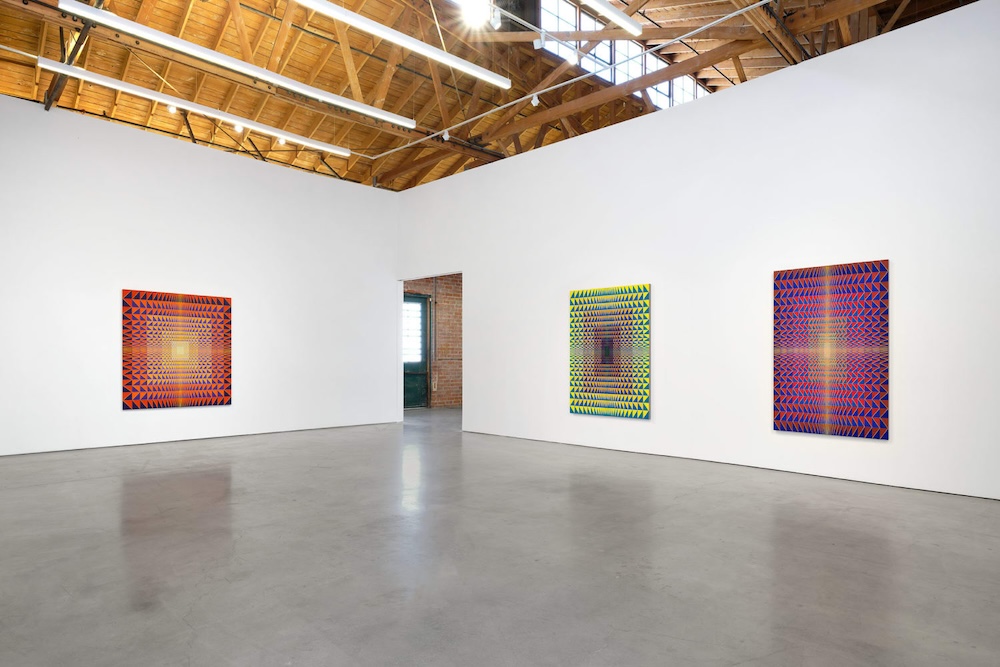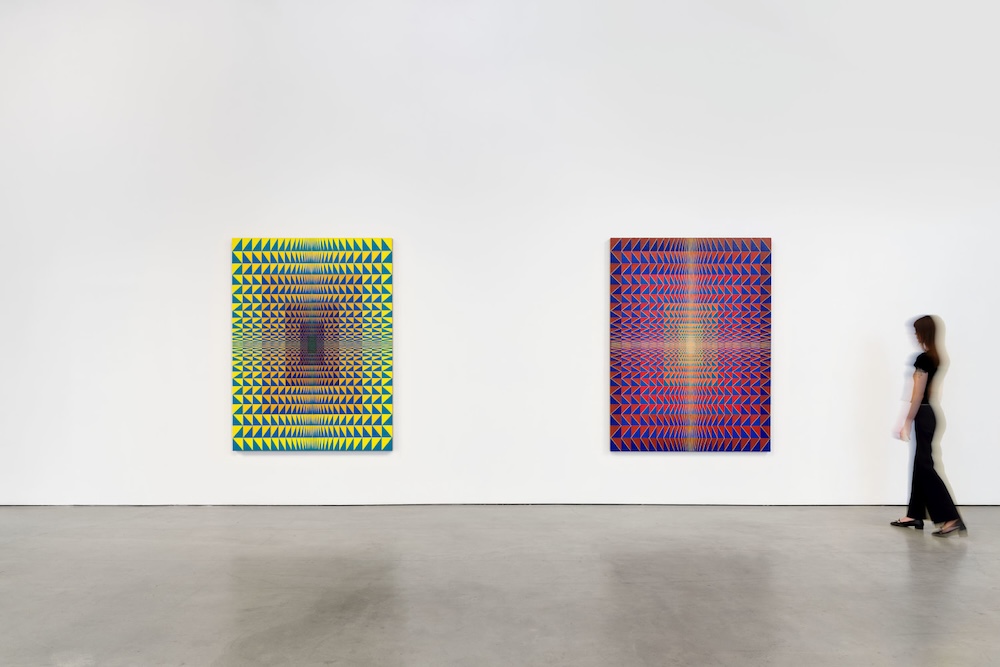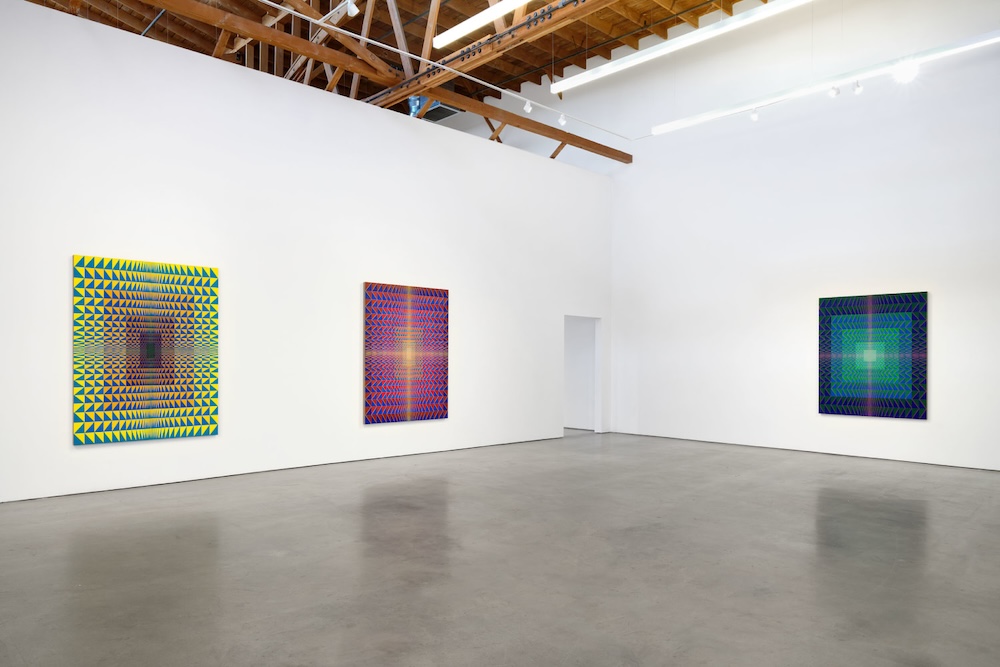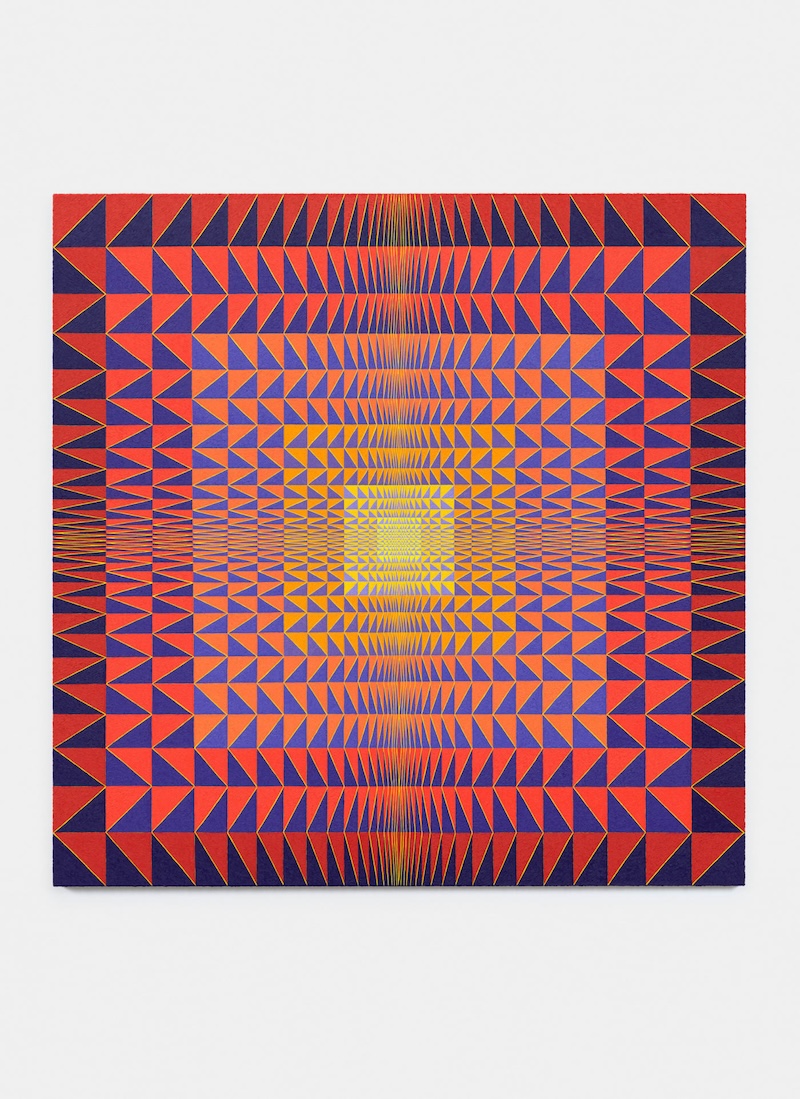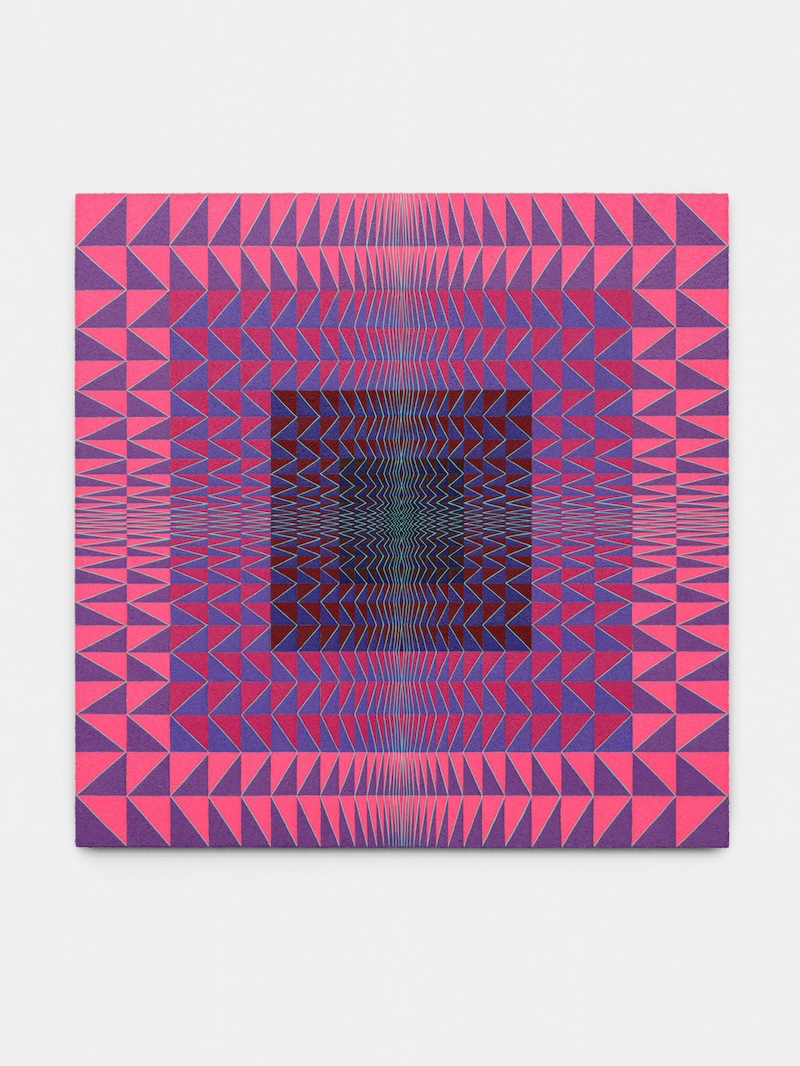François Ghebaly is proud to present The Open Window, Brooklin A. Soumahoro’s first exhibition with the gallery at the downtown Los Angeles space. The Paris-born, Los Angeles-based painter has a deep intuition for color and line. Beginning in humble painted underlayers and constructing his paintings with an extraordinary technical and personal discipline, Soumahoro marries precise geometric patterns with vivid, energetic fields of color to create threshold surfaces that are layered and transportative.
An unabashed abstractionist, Soumahoro’s sensibilities can be located in key lineages of abstract and non-representational art history: LeWitt, Stella, Martin, Binion, and many others. However, and largely by his own multicultural upbringing and wide-ranging interests, Soumahoro looks toward diverse, often unexpected avenues to fuel his creative process. Music, sound, and ideas around sonic frequency are as important to Soumahoro’s visual imagination as traditional West African textile patterning, or pioneering post-impressionist and expressionist painting. In the case of his exhibition The Open Window, Henri Matisse’s 1905 fauvist masterpiece Open Window, Collioure becomes the seed from which Soumahoro creates ten new abstract images, each polychrome oil works on linen. An icon of early modernism, Collioure is a testament to Matisse’s lifelong romance with the landscape of southern France. In this newest body of paintings, Soumahoro reflects on his own time spent in Aix-en-Provence and its outlying areas—in particular, the senses of time, light, color, space, and other qualities of the landscape immortalized by the Fauvists and avant-garde painters of the 19th and 20th centuries.
For Soumahoro, the connection between these visions of the French riviera and the final artworks is one lensed through a meticulous studio practice rooted in the artist’s own color theory research. The basis of his working procedure consists of countless self-produced graphs and diagrams of chromatic relationships, as well as a vast library of preliminary pattern documentation. Paints are all individually mixed according to precise gradations of value and saturation, while triangles, the primary building blocks of Soumahoro’s formal vocabulary, are mapped onto his canvases in radiating rectangles of repeated patterns of compression and distension that produce a wavelike effect. Only when Soumahoro adds the final triangles and his painted surfaces are complete is the final character of the works revealed: tranquil, reverberant, introspective.
“It’s my hope that in the work there’s the invitation for the viewer to ‘dive in.’ That form, color, and space might intersect in a way that’s like a portal or a mirror—a window into the viewer’s own mindset, or the world as it exists around them. Into something that’s unique to them.”



